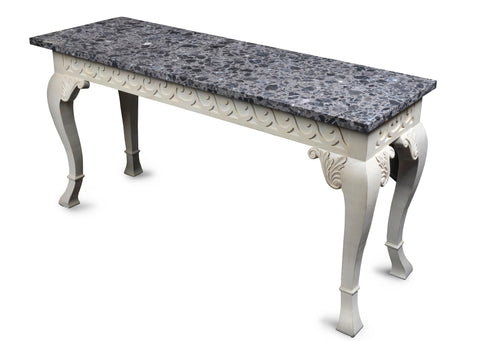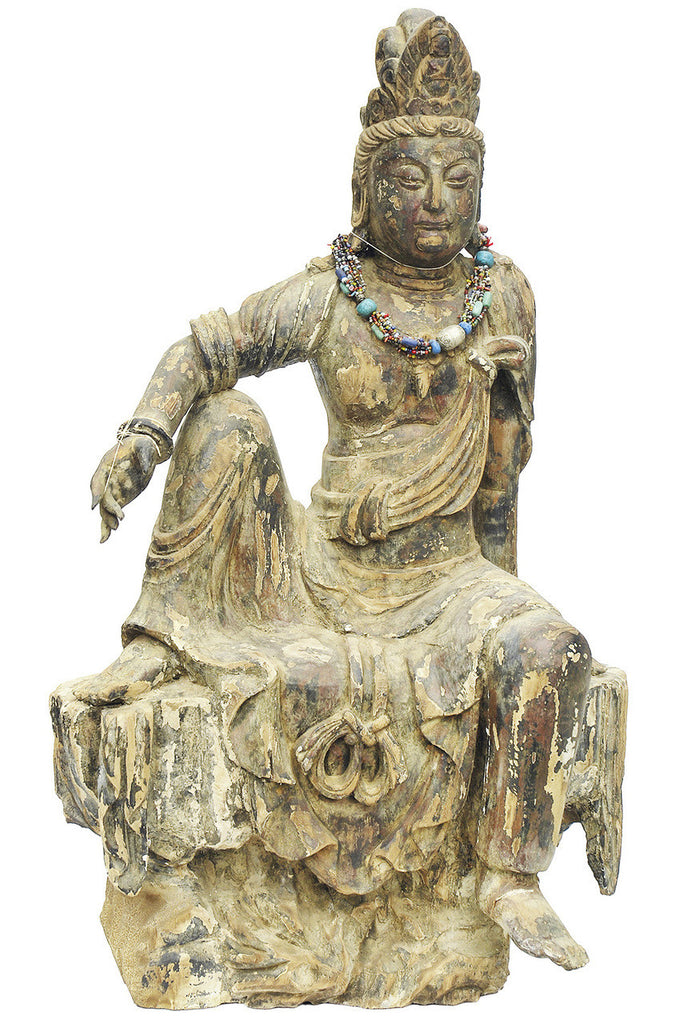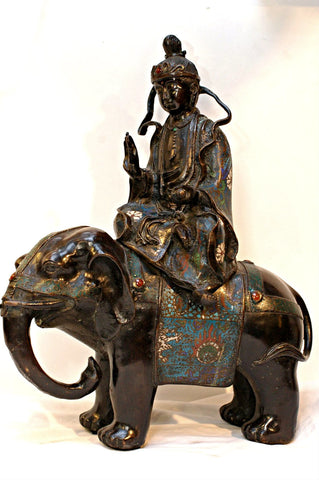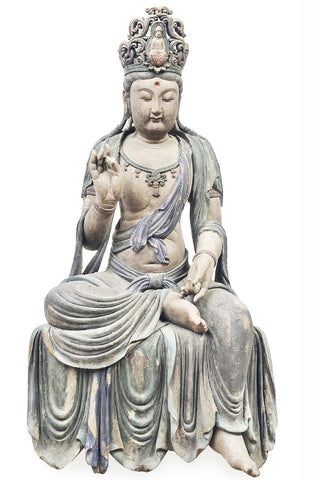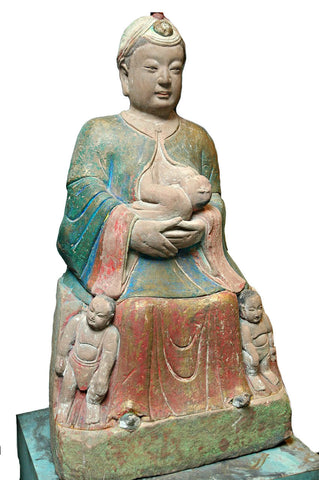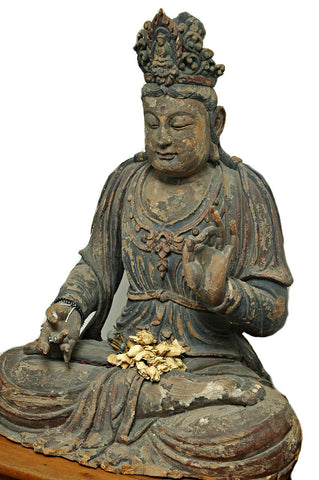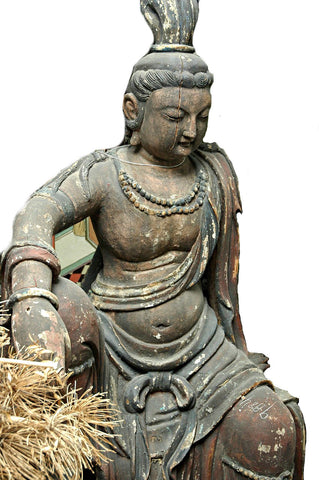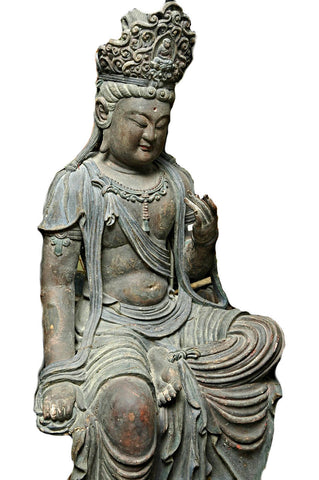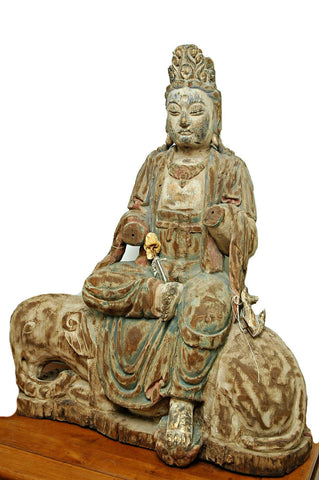A Chinese Carved Wood Figure of Bodhisattva, Ming Dynasty (1368-1644) A Chinese Carved Wood Figure of Bodhisattva, Ming Dynasty (1368-1644)
Call (03) 9509 0308 or send an enquiry grahamgeddes@grahamgeddesantiques.com
Her features depicted austerely, with heavy-lidded eyes beneath high arching eyebrows, her thin lips pursed, a large urna indented in...
Her features depicted austerely, with heavy-lidded eyes beneath high arching eyebrows, her thin lips pursed, a large urna indented in the centre of the forehead, the face bordered by articulated tresses of hair, her hair swept back into a high chignon, some twisted locks about the shoulders, bedecked with a pentagonal petal-shaped diadem, which bears the carved seated figure of the Amitabha Buddha, adorned with disc-shaped earrings, a floral necklace and bracelets, seated in lalitasana astride, her right leg raised, her right arm resting upon the raised leg, the brahmanic cord tied diagonally across the torso and around the slim waist, securing the dhoti and falling in a loose bow at the front of the skirt, the folds of the drapery sparingly carved, of composite parts, traces of vermilion and gold pigments remaining on the surface, all mounted upon a rocky naturalistic base.
Provenance: In a private Singaporean collection prior to March 1981
Her features depicted austerely, with heavy-lidded eyes beneath high arching eyebrows, her thin lips pursed, a large urna indented in the centre of the forehead, the face bordered by articulated tresses of hair, her hair swept back into a high chignon, some twisted locks about the shoulders, bedecked with a pentagonal petal-shaped diadem, which bears the carved seated figure of the Amitabha Buddha, adorned with disc-shaped earrings, a floral necklace and bracelets, seated in lalitasana astride, her right leg raised, her right arm resting upon the raised leg, the brahmanic cord tied diagonally across the torso and around the slim waist, securing the dhoti and falling in a loose bow at the front of the skirt, the folds of the drapery sparingly carved, of composite parts, traces of vermilion and gold pigments remaining on the surface, all mounted upon a rocky naturalistic base.
Provenance: In a private Singaporean collection prior to March 1981

